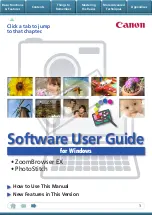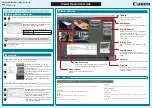
426
Chapter 6: ActionScript Core Classes
If you load external text files that are not Unicode-encoded, you should set
System.useCodepage
to
true
. Add the following code as the first line of code in the SWF file that is loading the data:
System.useCodepage = true;
When this code is present, Flash Player interprets external text using the traditional code page of
the operating system running Flash Player. This is generally CP1252 for an English Windows
operating system and Shift-JIS for a Japanese operating system.
If you set
System.useCodepage
to
true
, remember that the traditional code page of the
operating system running the player must include the characters used in your external text file in
order for the text to display. For example, if you load an external text file that contains Chinese
characters, those characters cannot display on a system that uses the CP1252 code page because
that code page does not include Chinese characters.
To ensure that users on all platforms can view external text files used in your SWF files, you
should encode all external text files as Unicode and leave
System.useCodepage
set to
false
by
default. This way, Flash Player interprets the text as Unicode.
Summary of Contents for FLEX
Page 1: ...Flex ActionScript Language Reference ...
Page 8: ......
Page 66: ...66 Chapter 2 Creating Custom Classes with ActionScript 2 0 ...
Page 76: ......
Page 133: ...break 133 See also for for in do while while switch case continue throw try catch finally ...
Page 135: ...case 135 See also break default strict equality switch ...
Page 146: ...146 Chapter 5 ActionScript Core Language Elements See also break continue while ...
Page 808: ...808 Chapter 7 ActionScript for Flash ...
Page 810: ...810 Appendix A Deprecated Flash 4 operators ...
Page 815: ...Other keys 815 Num Lock 144 186 187 _ 189 191 192 219 220 221 222 Key Key code ...
Page 816: ...816 Appendix B Keyboard Keys and Key Code Values ...
Page 822: ...822 Index ...
















































